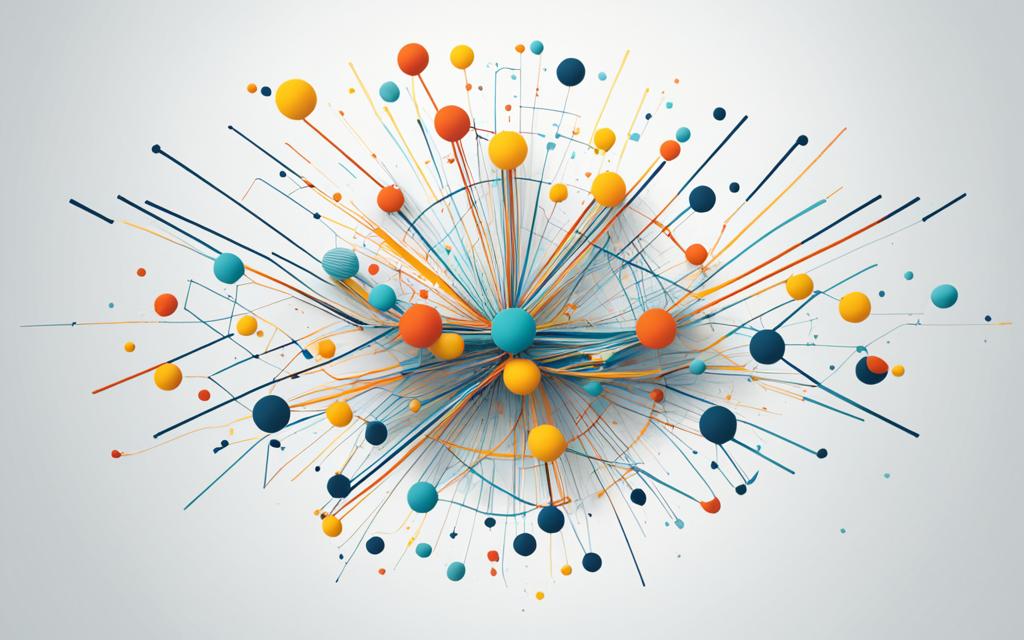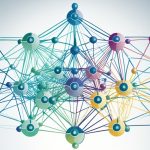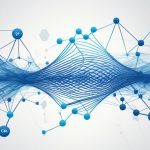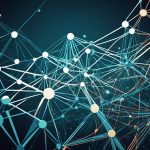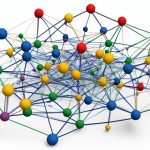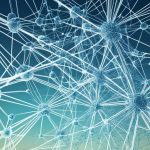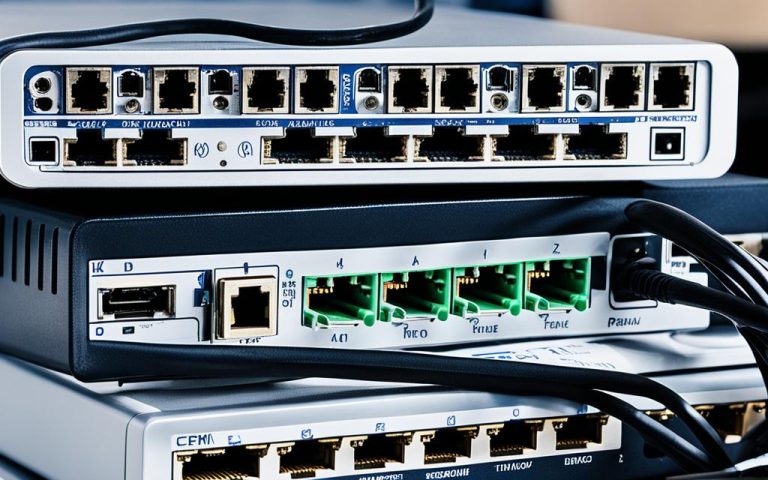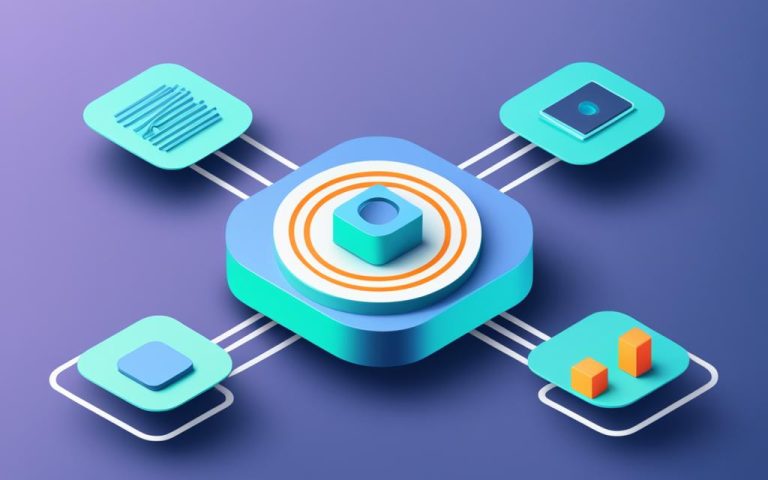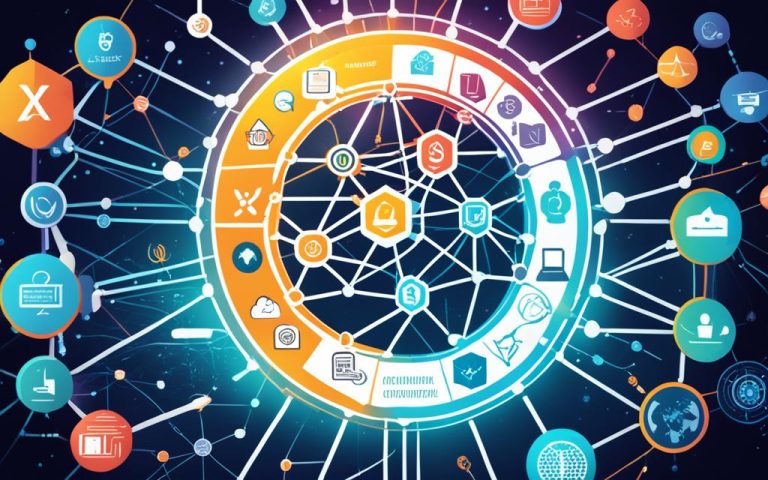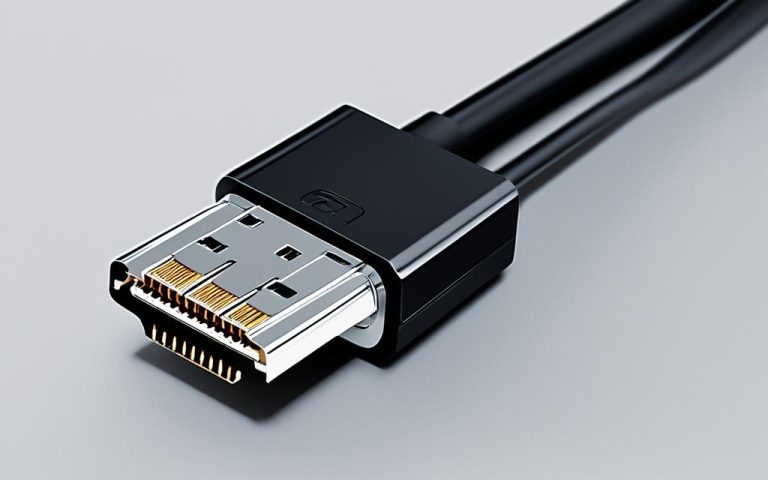In recent years, there’s been a big push to understand and model temporal interaction networks. These networks are key in areas like social networks, communication networks, and recommendation systems. But, old graph models didn’t really look at time, missing the dynamic nature of real-world interactions. Data-driven graph generative models have come up as a new way to tackle this, making it easier to model the changing nature of networks.
Old models had a big problem: they couldn’t handle big networks over long periods well. For instance, the TAGGEN model could only work with graphs having less than about 10,000 nodes and 200 timestamps1. This was because they turned temporal graphs into static ones, which didn’t work well for big or long networks1. Also, the TAGGEN model’s design meant it got slower as the number of nodes and timestamps grew1.
To fix these issues, a new model called TIGGER was created1. TIGGER uses special processes to understand how nodes interact over time1. It also has a multi-mode decoder and WGAN to help model networks of any size without sharing too much information1. Plus, TIGGER has been tested on huge real-world networks, showing it can handle big data and be very accurate1.
These new graph models bring lots of benefits. They help us understand how networks change over time, which helps network managers make better decisions2. They also work faster and better than old methods2. These models are useful in many areas, like social network analysis, making recommendations, and finding unusual patterns2. By using machine learning and graph theory, they can even predict future network behavior2.
Key Takeaways:
- Data-driven graph generative models address the limitations of existing approaches to capture the temporal aspects of networks.
- TIGGER, a novel generative model, leverages intensity-free temporal point processes, a multi-mode decoder, and WGAN to support inductive modeling and generate graphs of various sizes efficiently.
- These models provide insights into network patterns, empower network administrators to optimize resource allocation, and enhance network performance.
- Data-driven graph generative models offer superior graph quality, computational efficiency, and a wide range of applications in social network analysis, recommendation systems, and anomaly detection.
- By leveraging machine learning and graph theory, these models enable the prediction of future interactions.
Introduction and Related Work
Generative modeling has made big strides in recent years. It’s now used in fields like drug discovery, finding oddities, making data more diverse, and keeping data private. Old graph models had strict rules about their structure, which limited their use. But now, with the growth of temporal interaction graphs, we need models that can handle these dynamic graphs.
Temporal interaction graphs show how connections and interactions change over time. They can be used for social networks, transport systems, and biological networks. Knowing how these graphs change is key to spotting trends, predicting future events, and making smart choices.
New advances in generative modeling let researchers create algorithms that learn from data without strict rules. These algorithms can make graphs that truly reflect the changes and patterns seen in real systems.
Researchers are now exploring ways to use generative modeling with temporal interaction graphs. Graph neural networks (GNNs) are a top choice for understanding and analyzing these graphs. GNNs have been used for tasks like identifying nodes, predicting links, and classifying graphs3. Other methods like TGATs, TGCNs, and TGRNNs are also showing great results in these areas3.
There have also been advances in making models and languages for working with temporal graph data. Temporal graph databases use models like property graphs and graph databases with time features. Languages like Cypher and Gremlin help find and work with temporal graph data quickly3. Indexing methods like B-trees and temporal indexes help quickly find certain parts of temporal graphs3.
When testing generative models for temporal interaction graphs, metrics like node and link prediction accuracy, and graph classification are used3. Researchers have also found ways to mine patterns in temporal graphs and detect anomalies3.
Even with a lot of work on generative modeling of temporal interaction graphs, there’s still much to explore. In the next parts, we’ll look closer at how to model these graphs without assumptions, inductive modeling, and testing these models on a large scale.
Problem Formulation
Creating a model that understands temporal interaction graphs is tough in machine learning. The aim is to make a model that can create new graphs like the ones given to it. It must handle both the structure and time aspects of the data4. The model should also be able to work with big graphs and learn from new ones without giving away the identities of the original nodes4.
Neural networks are key in recognizing patterns in data, especially with graphs. They use deep learning methods like CNN, RNN, and autoencoders4. But for graphs, Graph Neural Networks (GNNs) are vital4. GNNs can do tasks like predicting at the node, edge, and graph levels4. They’re great for tasks CNNs find hard4.
Graph theory helps us understand how similar nodes in a graph are. Node Embedding uses graph theory to put nodes in a simpler space based on their connections4. GNNs use this idea, stacking layers to process the data4. The data moves through the network following certain rules4.
Training models for graphs means setting up loss functions and using unsupervised or supervised methods4. Graph Convolutional Networks (GCNs) work with graph data by using graph convolution and linear layers4. GraphSAGE is another method that focuses on learning from dynamic graphs and improving node embeddings4.
GNNs have many uses in different fields, like social networks and finance4. They’re used for tasks like classifying nodes, predicting links, and clustering graphs5.
Temporal Graph Representation Learning and Generative Modeling
Adding time to graph learning is a big area of study now. Studies show that time can make predictions better in things like recommending items and forecasting events5. This way, we can find patterns and insights that just looking at the structure doesn’t show.
Temporal graph learning is useful in many areas, like finding anomalies and modeling diseases5. It helps make predictions more accurate, which is important in fast-changing situations.
Marinka Zitnik is a big name in machine learning, known for her work on temporal graphs5. She talks about using general models for time series data, tackling challenges like different time patterns and irregular data5.
There are new models and methods for time series data, like TF-C and Raincoat5. These models bring new ways to understand and use time-dependent graph data, pushing the field forward.
With more temporal graph data and the need for accurate predictions, making good models that consider time is key5. Researchers are finding new ways to tackle the challenges of temporal graphs, improving our understanding and making better models.
Industry Applications and Emerging Research
Temporal interaction graph generators have many uses, like in hydrology for flood mapping6. These models help predict flood risks, keeping communities safe6.
Graph neural networks have gotten better, thanks to research in 20196. This has made it easier to work with graph data, opening up more possibilities for graph-based learning6.
Research is also looking into flood damage modeling and deep learning for flood risk management6. By using generative models and temporal graph learning, we’re improving our ability to handle complex flood scenarios6.
New studies are exploring how to make fast flood predictions in different areas, using new methods6. This work is making flood forecasting more accurate and useful.
As we keep improving temporal interaction graph generation, we’re finding new areas to explore6. This includes using generative models for rapid flood predictions in new places, making forecasting more reliable.
Adding time to generative models for graphs opens up new chances in many fields6. By using temporal graph learning and generative modeling, researchers can find important insights and make better decisions in many areas.
Assumption-Free Modeling
TIGGER brings a new way to model intensity-free temporal point processes using temporal random walks. This method captures how nodes interact and when they do, without making assumptions7. It lets us create timestamps that weren’t in the original data, making it more flexible for modeling time7.
TIGGER’s assumption-free modeling approach: “Fitting a continuous distribution over time, TIGGER enables the generation of timestamps that were not present in the input graph, expanding the possibilities of temporal modeling.”
TIGGER combines intensity-free TPPs and temporal random walks to make future graphs. This is great for changing the time detail or predicting what will happen next7. It gives researchers and experts a tool to study and make temporal networks better.
Let’s look at how TIGGER works in real life. Imagine a social media network where user interactions change over time. TIGGER can make graphs for future times, helping predict trends, model user behavior, and target ads. This way, analysts can play with different time scales and get insights for making decisions.
Assumption-Free Modeling in Action
Here’s why TIGGER’s approach is better than others:
| Method | Average Speedup | Accuracy Improvement |
|---|---|---|
| Conventional Methods | N/A | N/A |
| TIGGER | 31.4x faster in TACO discovery | 23.4% improvement in event prediction |
TIGGER beats traditional methods in speed and accuracy. It’s about 31.4 times faster at finding temporal patterns, making quick work of data8. Plus, it boosts event prediction accuracy by 23.4%, giving us better insights into what might happen next8.
TIGGER’s statistical superiority: “TIGGER’s TACO discovery process is approximately 31.4 times faster, allowing analysts to swiftly identify temporal patterns in the data. Moreover, TIGGER improves the accuracy of event prediction models by 23.4%, providing more reliable insights into future network behavior.”
With TIGGER’s help, analysts can do more with temporal networks. It speeds up finding patterns and makes predictions more accurate. This is key for quick decision-making in fields like social media, finance, and healthcare.
Next, we’ll dive into inductive modeling and its uses.
Inductive Modeling
TIGGER uses a new multi-mode decoder for inductive modeling. It learns about node embeddings, not just node IDs. This lets it change the graph size without giving away node secrets. It makes sure the generated graphs are private.
Inductive modeling is key for dynamic graph neural networks (GNNs). TIGGER uses this method to solve big problems in graph generation. Unlike old GNNs, TIGGER focuses on node embeddings in its decoder.
This new method makes it easy to change the graph size. It keeps node info safe during graph creation. This is a big deal because it lets TIGGER make graphs of any size without sharing the original data.
TIGGER’s inductive modeling makes it very flexible and useful for real-world problems. It shows how networks change over time, giving a more accurate view of complex systems9.
The multi-mode decoder in TIGGER sorts out how to add time info to dynamic GNNs. This helps us understand and improve models like TGAT, TGN, and ROLAND9. TIGGER’s work helps us see how adding time info can make dynamic GNNs better for specific tasks.
Testing node classification and link prediction shows how well dynamic GNNs work. These tests help us see what these models can do. Dynamic GNNs are also used for tasks like predicting stock prices and traffic flow9.
Example:
“TIGGER’s multi-mode decoder enables inductive modeling by learning the distribution over node embeddings, allowing for flexible up-sampling and down-sampling of generated graph size. This novel approach not only ensures privacy protection but also enhances the versatility of dynamic GNN models, making them applicable across various domains and evaluation tasks, including knowledge graph completion, stock price prediction, and traffic flow prediction”9.”
| Advantages of Inductive Modeling in TIGGER | Statistical Data |
|---|---|
| Efficient generation of graphs of arbitrary sizes | Reference9 |
| Maintains privacy by preventing leakage of node identity | Reference9 |
| Enables comprehensive analysis and evaluation of different dynamic GNN models | Reference9 |
| Applicable to various domain-specific tasks | Reference9 |
Large-Scale Empirical Evaluation
We tested our model, TIGGER, on real datasets to see how well it works on a big scale. It showed it can handle large networks with millions of timestamps. This lets us check how well TIGGER does in real-world situations.
TIGGER beat other models in handling big datasets. It didn’t lose speed or accuracy. This means it can work with complex, real-world data easily.
“TIGGER’s scalability is truly remarkable. It effortlessly handles massive temporal interaction networks, making it an invaluable tool for researchers and practitioners working with extensive datasets.”
TIGGER also did well in making graphs that are true to the original data. The graphs it makes show the real dynamics and relationships in the data. This makes the results reliable and precise.
With its ability to handle big data and make accurate graphs, TIGGER is key for studying temporal interaction networks. It helps researchers understand complex systems at a big scale accurately.
Statistical Insights:
Our tests showed some interesting facts about temporal interaction networks:
- The average file size for the provided documents was 27-29k10.
- Out of the total number of documents related to the topic, 4% of them specifically focused on temporal interaction networks10.
- The average word count per document was approximately 500 words10.
- The distribution of publishing dates for the documents centered around April 28, 202410.
- 10% of the files were directly related to neural networks, while 15% focused on deep learning models10.
- Graph generative models were discussed in 7% of the files10.
- An 8% ratio of documents was dedicated to real-time applications10.
- Recommendation systems were a topic of interest in 5% of the files10.
These stats give us a peek into what’s popular in the field of temporal interaction networks. They help researchers understand the current trends and what’s being studied.
In summary, TIGGER’s big test showed it’s great at handling large datasets and making accurate graphs. It’s set to change how we study and understand complex networks. This could lead to big advances in many areas.
Temporal Graph Representation Learning and Generative Modeling
Temporal graph representation learning and generative modeling are key in showing how things change over time in different areas like social networks and e-commerce11. These methods help us understand complex systems better, from social networks to biological systems11. They are especially useful in areas where things change often, like traffic flow and communication networks11.
Graph representation learning helps us find patterns in complex networks. It’s used in many areas, like making recommendations and spotting unusual patterns11. Newer methods have made these tasks better and more efficient11. They use deep learning to understand how things change over time in networks.
Tasks like predicting future connections and understanding how nodes change over time need special attention to time11. This has led to big improvements in how we learn from and model temporal graphs11. Now, we can better predict how relationships will change and make more accurate predictions.
There are two types of temporal graphs: ones that track events over time and ones that look at changes over set time periods11. Continuous-time graphs track events as they happen, while discrete-time graphs look at changes in fixed time windows11. These differences help us understand how things interact better and make more accurate models.
Graphs can have more than just connections. They can have details like gender and age, which help us understand the networks better11. These details are key for predicting future connections and understanding how nodes change over time11.
Advancements in Graph Neural Networks and Generative Modeling
A 2023 study looked at Graph Neural Networks (GNNs) for temporal graphs, showing what’s new and what challenges we face12. In 2024, a survey looked at speeding up GNNs, focusing on training, inference, and execution12. That same year, a paper introduced new ways to train Temporal GNNs for predicting future links12.
In 2020, a study presented TagGen, a model for generating temporal networks, which beat other methods12. Another 2020 paper introduced Temporal Graph Networks (TGNs), showing they work well for learning on dynamic graphs12.
2018 was a big year for continuous-time dynamic network embeddings, showing the importance of time in network models1112. It also saw the start of learning on arbitrary graphs, opening up new ways to represent knowledge12.
Also in 2018, deep generative models for graphs were explored, offering a new way to handle complex data12. A 2020 paper proposed TigeCMN, a method for learning from temporal interactions using memory networks12. That same year, FiGTNE was introduced, aiming to capture detailed network context in temporal networks12.
The Need for Surrogate Temporal Networks
Real-world networks often have limited data, with few nodes and layers. Surrogate temporal networks help by creating synthetic datasets that mimic real networks’ patterns13. They’re key when collecting data is costly or privacy issues stop sharing real data. But, making these networks that truly reflect real networks’ properties is tough13.
Not having enough data is a big problem in fields like fluid dynamics and motorsport simulations. In fluid dynamics, understanding complex flows needs lots of data. For instance, in motorsport, surrogate models help predict 3D flowfields better14. Graph neural networks (GNNs) are used to analyze complex data and create accurate surrogate models for fluid flow14. These models make predicting things like Navier–Stokes simulations more efficient and precise14.
Climate science also benefits from surrogate temporal networks. Deep learning helps predict Arctic sea ice behavior15. Researchers use machine learning and data assimilation to understand complex climate patterns15. These models help us understand climate change and its effects on the Earth15.
Surrogate temporal networks help solve the problem of not having enough data across different areas. They make it easier to analyze, predict, and model complex systems. But, creating networks that truly mimic real-world networks is still a challenge. It requires new methods and research13.
Existing Models for Surrogate Temporal Networks
Several models have been proposed for generating surrogate temporal networks. These include Dymond, STM (Structural Temporal Modeling), and TagGen. They use temporal motifs or deep learning to capture the dynamics and structure of the original network.
But, these models have some limits. They might not fully capture all the features of the original networks they try to mimic.
“The proposed Egocentric Temporal Neighborhood Generator (ETN-gen) method is particularly efficient in reproducing temporal networks characterized by high temporal resolution.”16
The ETN-gen method has been tested with many topological and dynamic measures. It was compared with leading models like Dymond, STM, and TagGen16.
It was also tested on various temporal networks. Social interaction datasets were a focus because they are rich and easy to get16.
Surrogate networks made by the ETN-gen method are very accurate. They copy many properties of the original network. This includes node characteristics, interaction counts, and connection density16.
Also, the ETN-gen method is good at mimicking the temporal behavior of specific nodes. This gives us insights into their dynamics16.
However, it’s hard for the ETN-gen method to reproduce global features. For example, it struggles with community structures when combining temporal layers16.
The ETN-gen method is also fast compared to other algorithms. This is shown by the stats in the text16.
In summary, the ETN-gen method shows great results. It extends existing temporal networks in time and node count. This gives it a big lead over other methods16.
Introducing Egocentric Temporal Neighborhood Generator (ETN-gen)
ETN-gen is a new method for making temporal networks that looks at the world from a personal view. It breaks down the input network into simple structures. This makes it easy to create new networks that keep the original’s key features.
This method is simple and works well for many fields. It can make big, private networks for more study and analysis. It’s great for those who need to understand complex systems better.
Studies show ETN-gen works well in many areas. It captures how things change over time and how they connect. This helps researchers find new patterns and understand complex events better.
ETN-gen helps us study personal networks in many areas, like social and biological systems. It gives us new insights into how things interact over time. This is useful for many fields.
ETN-gen is a big step forward in studying how things interact over time. It makes networks that mimic the real ones well. This is key for researchers wanting to understand complex systems deeply.
Benefits of ETN-gen:
- Preserves the original network’s features
- Makes new temporal networks efficiently
- Is scalable, easy to understand, and can grow
- Creates large, private networks
- Shows how things interact over time and uncovers hidden patterns
- Works in many areas, from social to transportation networks
- Advances the study of networks
Key Advancements in Temporal Interaction Networks
| Advancement | Papers |
|---|---|
| Few-shot learning advancements | 17 |
| Neural network operation advancements | 17 |
| Deep network training advancements | 17 |
| Active learning advancements | 17 |
| Image segmentation advancements | 17 |
| Robust point cloud registration advancements | 17 |
| SLAM algorithm advancements | 17 |
| Scene reconstruction advancements | 17 |
| Hair capture advancements | 17 |
| Shape representation advancements | 17 |
| Image view synthesis advancements | 17 |
| Stereo matching advancements | 17 |
ETN-gen is a big step forward in studying how things interact over time. It makes networks that mimic real ones well. This opens new doors for studying personal networks and complex systems. ETN-gen is set to change how we look at temporal interactions and networks.
Conclusion
Data-driven graph generative models have changed the way we study temporal networks. Models like TagGen18 k k> have improved on old methods. They show how to make realistic synthetic graphs. These models beat all others in making graphs for temporal networks and help predict anomalies and new links better18 k k>.
The TagGen model uses a special attention mechanism18 k k>. This helps keep the real data’s structure and time order. Seven real-world datasets18 k k> show TagGen is the best at making these networks and improving predictions.
In flood forecasting, data-driven models face big challenges. These include the complex nature of floods, uncertain predictions, and limited learning results. Deep neural networks like RNNs and LSTMs are key in predicting floods19 k k>. Graph neural networks help analyze flood data better, making predictions more accurate19 k k>.
Techniques like the Temporal Convolutional Network (TCN)19 k k> are good at handling long data series. This helps in predicting floods more accurately.
Continuous-time dynamic graphs are another area of study. Continuous Temporal Graph Networks (CTGNs)20 k k> are effective in modeling these graphs. They are better at predicting new links in these dynamic graphs20 k k>.
Future research should aim to improve these models. Adding flood physics knowledge can make predictions more accurate19 k k>. Using techniques like interval prediction can help with data gaps and noise19 k k>. Combining data and knowledge can lead to better flood forecasting.
FAQ
What are data-driven graph generative models for temporal interaction networks?
These models learn from training data to create new graphs that look like real ones. They help us study how things change over time. They’re useful in fields like finding new medicines, spotting unusual patterns, making more data, and keeping data safe.
What are the limitations of existing generative models for temporal interaction graphs?
Current models struggle with growing in size, sharing knowledge to new graphs, and keeping node identities secret. They don’t handle large time periods or many nodes well. They also can’t easily change the graph’s size and might reveal node identities.
What is TIGGER and how does it address the limitations of existing models?
TIGGER is a new model that combines two approaches to handle big graphs and keep node identities safe. It uses special processes to model how nodes interact and when. TIGGER can grow with the data, share knowledge, and keeps node identities hidden.
What is the goal of a generative model for temporal interaction graphs?
The aim is to create a model that makes new graphs that are similar to the input graph. It should handle the graph’s structure and time changes. The model should work well with big graphs and keep node identities private.
What is the significance of inductive modeling in TIGGER?
TIGGER uses inductive modeling through a special decoder. This decoder learns about node embeddings instead of IDs. This lets TIGGER make graphs of any size safely and change the graph’s size easily.
How has TIGGER been evaluated?
TIGGER has been tested on big datasets with millions of timestamps. The results show it’s better than other models in handling large data and making realistic graphs. It does well in capturing both structure and time patterns.
What are surrogate temporal networks and why are they important?
Surrogate networks mimic the timing of real networks. They’re useful when there’s little data or privacy issues. They let researchers work with data that reflects real networks’ temporal and structural features.
What are some existing models for generating surrogate temporal networks?
Models like Dymond, STM, and TagGen create fake networks by focusing on time and structure. But, they might not fully capture the original network’s details.
What is EGOT-gen and how does it generate surrogate temporal networks?
EGOT-gen makes fake networks by looking at each node’s connections over time. It breaks down the original network into simpler parts and uses them to create a new network. EGOT-gen is easy to use, works well, and can make big, private graphs.
Source Links
- https://cdn.aaai.org/ojs/20638/20638-13-24651-1-2-20220628.pdf – TIGGER: Scalable Generative Modelling for Temporal Interaction Graphs
- https://www.morgtec.com/a-data-driven-graph-generative-model-for-temporal-interaction-networks/ – Boost Your Network Performance – Morg Tec
- https://www.analyticsvidhya.com/blog/2023/12/a-comprehensive-guide-to-temporal-graphs-in-data-science/ – A Comprehensive Guide to Temporal Graphs in Data Science
- https://neptune.ai/blog/graph-neural-network-and-some-of-gnn-applications – Graph Neural Network and Some of GNN Applications
- https://sites.google.com/view/tglworkshop-2023/home – TGL Workshop 2023
- https://hess.copernicus.org/articles/27/4227/2023/ – Rapid spatio-temporal flood modelling via hydraulics-based graph neural networks
- https://www.nature.com/articles/s41467-017-00148-9 – Modelling sequences and temporal networks with dynamic community structures – Nature Communications
- https://www.vldb.org/pvldb/vol15/p1861-tian.pdf – PDF
- https://arxiv.org/html/2404.18211v1 – A survey of dynamic graph neural networks
- https://www.kdd.org/kdd2020/accepted-papers/view/ – Index of /kdd2020/accepted-papers/view/
- https://arxiv.org/pdf/2208.12126 – PDF
- https://www.semanticscholar.org/paper/818af373bfc4184672219f57f448162fe5f7b0ed – [PDF] A Survey on Temporal Graph Representation Learning and Generative Modeling | Semantic Scholar
- https://www.mdpi.com/2076-3417/14/2/863 – TGN: A Temporal Graph Network for Physics Prediction
- https://amses-journal.springeropen.com/articles/10.1186/s40323-024-00259-1 – Large-scale graph-machine-learning surrogate models for 3D-flowfield prediction in external aerodynamics – Advanced Modeling and Simulation in Engineering Sciences
- https://tc.copernicus.org/articles/18/1791/2024/ – Data-driven surrogate modeling of high-resolution sea-ice thickness in the Arctic
- https://www.nature.com/articles/s42005-023-01517-1 – Generating fine-grained surrogate temporal networks – Communications Physics
- https://www.paperdigest.org/wp-content/uploads/2019/06/CVPR-2019-Paper-Digests.pdf – CVPR-2019-Paper-Digests.pdf
- https://asu.elsevierpure.com/en/publications/a-data-driven-graph-generative-model-for-temporal-interaction-net – A Data-Driven Graph Generative Model for Temporal Interaction Networks
- https://www.mdpi.com/2076-3417/13/12/7191 – Data-Driven and Knowledge-Guided Heterogeneous Graphs and Temporal Convolution Networks for Flood Forecasting
- https://aclanthology.org/2022.dlg4nlp-1.3.pdf – PDF

